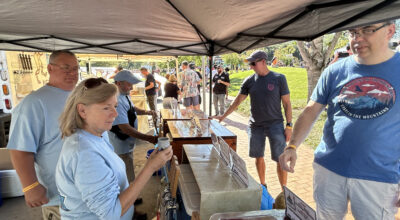Governor to visit Salisbury as part of tax credit tour
Published 12:10 am Sunday, February 8, 2015
Gov. Pat McCrory is scheduled to visit Salisbury Monday as a part of Cultural Resources Secretary Susan Kluttz’s statewide tour to promote the revival of a state historic tax credit.
McCrory, former Salisbury Mayor Kluttz and local officials will have a news conference at 10 a.m. Monday at Salisbury City Hall about the credits before touring downtown to view projects that previously benefitted and buildings that could utilized a revived tax credit.
The tax credit expired at the end of 2014, leaving only federal reimbursements. Kluttz’s Salisbury stop with McCrory would be the latest of several in a statewide tour to try to bring back a state reimburse for historic restoration or renovation projects.
“The historic tax credits brought jobs and economic development to rural towns and big cities across North Carolina,” Kluttz said in a news release. “The rebirth of one abandoned downtown building has a ripple effect throughout a community and often sparks a renaissance of development in nearby structures. In addition, these historic buildings and mills are an emotional tie to our heritage and exemplify what makes North Carolina unique. These credits are critical for North Carolina’s economic recovery.”
McCrory also touted tax credits in Concord in late January as a part of Kluttz’s tour.
Salisbury Councilwoman Karen Alexander, who helped organize the tour, said any members of the public interested in listening to remarks at city hall should enter the building through the Lee Street entrance.
Starting in 1998, the state provided a 20 percent credit for eligible projects, which could be combined with the 20 percent federal credit. The state also provided a 30 percent credit for the rehabilitation of non-income-producing historic properties. One mandatory requirement for the state credit was being listed on the National Register of Historic Places.
In a January interview with the Salisbury Post, Kluttz said the revived credit would provide a slightly lower overall tax credit percentage — varying from 15 to 25 percent based on the type of project.
Monday’s tour of Salisbury would include income- and non-income producing properties which took advantage of the tax credits prior to the 2014 expiration. Alexander said specially colored balloons would denote specific types of projects, such as commercial and residential.
Some of the Salisbury projects that have used the tax credit, include: the Hedrick Block Building, which houses Pottery 101 on South Main Street; The Yancey-Hardiman Building, the location of Bangkok Downtown and offices and East Innes Street; Phil’s Building, the home of Literary Book Post on South Main Street and Go Burrito’s building on West Fisher Street.
In total, 51 non-income-producing properties used the tax credit from 1998 until the credit’s expiration. A figure provided in an email from Alexander stated the total investment for non-income-producing investments was $8.7 million. Similarly, 55 income-producing projects used the credit since 1998.
Rowan ranks fourth in the state for the number of commercial tax credit projects since 1998.
Statewide numbers from Kluttz’s Department of Cultural Resources states the credits were used in 90 of North Carolina’s 100 counties. A total of 2,484 projects resulted in $1.6 billion in private investment.
As a part of the effort to revive the historic tax credit, the Department of Cultural Resources and other state organizations set up a website with a petition that had nearly 4,900 signatures on Saturday afternoon. The website — historictaxcredits.org — also includes historic information and data about the credits before they expired.
Contact reporter Josh Bergeron at 704-797-4246





